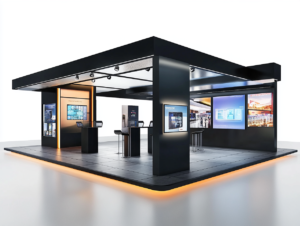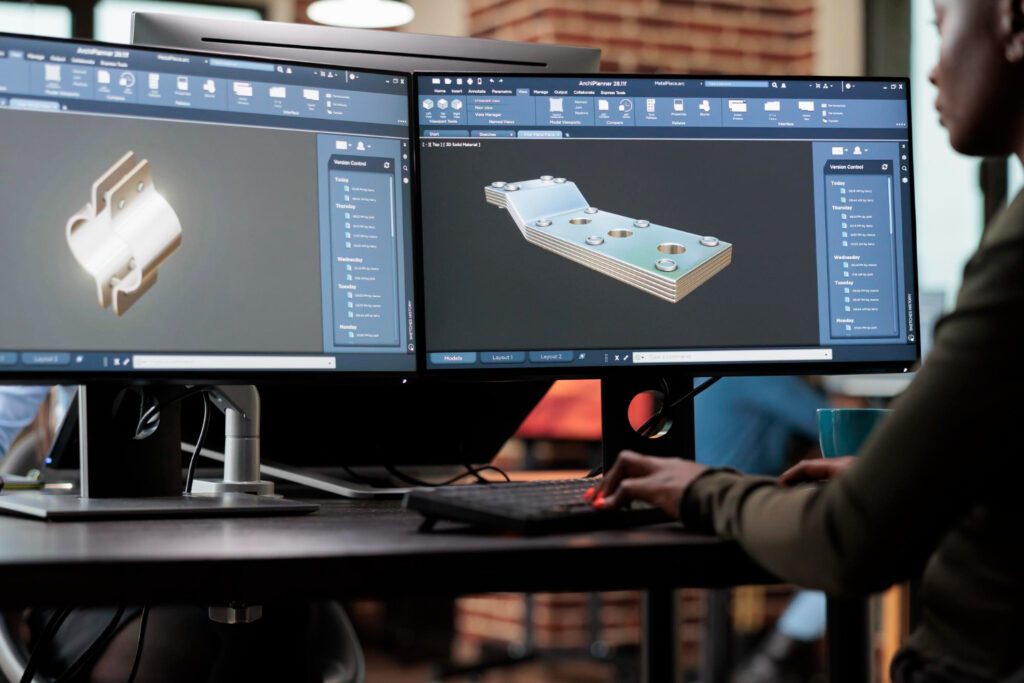In today’s fast-paced industrial landscape, the power of 3D animation has become indispensable. Industrial 3D animation services are transforming the way companies visualize products and processes. From prototyping to marketing, these services enhance understanding and communication of complex concepts. This article dives into the top uses of 3D industrial animation, showcasing how it’s revolutionizing various industries.
What is an industrial 3D animation?
Industrial 3D animation refers to the creation of three-dimensional visual representations of industrial products and processes. Using advanced animation software, designers create detailed 3D models that can simulate real-world machinery and complex processes. This type of animation allows companies to visualize their ideas before they hit the manufacturing stage. By employing industrial animation services, businesses can communicate intricate concepts effectively, making them more accessible to stakeholders and customers alike. The immersive experiences provided by 3D animation can bridge the gap between technical details and user understanding.
Key Benefits of 3D industrial animation
The benefits of 3D industrial animation are vast and varied. Firstly, it enhances visualization, allowing teams to see a product from multiple angles and in different environments through interactive 3D experiences. This is particularly useful during the prototyping phase, as it helps in identifying potential design flaws early on. Secondly, industrial 3D animation can streamline communication between departments, such as engineering and marketing. By using 3D visuals, everyone can be on the same page regarding product features and benefits. Lastly, the interactive nature of 3D animations allows for immersive experiences that engage viewers, making it easier to convey complex information in a digestible format.
Top 5 Uses of Industrial 3D Animation
1. Product Visualization & Prototyping – How companies use animation to showcase products before manufacturing.
One of the primary uses of 3D animation is in product visualization and prototyping, which is essential for understanding complex manufacturing processes. Companies use this animation to showcase their products before they are manufactured, allowing for immediate feedback and modifications. It not only helps in visualizing the end product but also in understanding how different components interact with each other. This is crucial for identifying potential issues that could arise during production. By leveraging 3D product animation, businesses can secure investments, win clients, and even gauge market reactions before committing to full-scale production.

2. Engineering & Technical Visualization – Demonstrating mechanical operations and complex engineering concepts.
Engineering and technical visualization are other key applications of industrial 3D animation. It allows engineers to demonstrate mechanical operations and complex concepts in an engaging way. By using animation, intricate systems can be broken down into simpler parts, making them easier to understand. This is particularly beneficial during presentations or training sessions, where clarity is vital. Animation services can illustrate how machinery operates, showcasing moving parts and interactions in a visually appealing manner. This not only enhances comprehension but also helps in training employees on new technologies effectively.
Technical Visualization
3. Manufacturing Process Simulation – Streamlining workflows and troubleshooting production issues.
Manufacturing process simulation is another valuable application of industrial 3D animation. By simulating workflows, companies can identify inefficiencies and optimize their processes. It allows teams to visualize the entire production line, from raw material handling to final assembly. This method can uncover potential bottlenecks or issues that might not be apparent in real-world scenarios. Additionally, 3D animation can be used to simulate various production scenarios, enabling businesses to troubleshoot problems before they arise. This proactive approach saves both time and resources, enhancing overall productivity.

4. Marketing & Sales Presentations – Creating compelling product animations for marketing campaigns.
In marketing and sales, compelling visuals are crucial for capturing attention. Industrial 3D animation can create engaging product animations that elevate marketing campaigns. These animations can highlight key features and benefits, making them more persuasive. By presenting products in a visually stunning manner, companies can differentiate themselves in a crowded marketplace. Additionally, animations can be tailored to specific audiences, ensuring that the messaging resonates well. The versatility of 3D animation allows it to be used across various platforms, from social media to trade shows, maximizing reach and impact.
5. Training & Safety Demonstrations – Simulating industrial environments for employee training.
Training and safety demonstrations are essential in industrial settings, and 3D animation plays a vital role in this area. By simulating industrial environments, companies can train employees effectively without exposing them to real hazards. Animated safety demonstrations can visualize potential risks and safe practices, making training sessions more interactive and engaging. This method enhances retention and understanding of safety protocols, ultimately leading to a safer workplace. Additionally, using 3D animation for training allows for the creation of immersive experiences that can replicate real-life scenarios, ensuring that employees are well-prepared for their roles.

6. Assembly & Maintenance Guides – Providing animated step-by-step instructions.
Assembly and maintenance guides benefit greatly from the use of 3D animation. Animated step-by-step instructions can simplify complex assembly processes, making them easier for end-users to follow. Instead of traditional manuals that can be hard to interpret, 3D animation provides a visual aid that enhances understanding. This is particularly useful for intricate machinery where precise assembly is critical. Industrial animation services can create custom guides that cater to different skill levels, ensuring everyone can successfully assemble and maintain products. As a result, companies can improve customer satisfaction and reduce the likelihood of errors.
7. Virtual Reality (VR) & Augmented Reality (AR) Integration – Enhancing interactive training and simulations.
The integration of Virtual Reality (VR) and Augmented Reality (AR) with 3D animation opens up new avenues for interactive training and simulations. These technologies can create immersive experiences that transport users into a virtual industrial environment. By combining 3D animation with VR and AR, companies can offer hands-on training that mimics real-world scenarios. This approach not only enhances learning but also boosts engagement, making training sessions more enjoyable. Furthermore, these immersive experiences can be tailored to specific tasks or machinery, ensuring that employees are well-equipped to handle their responsibilities in a safe and efficient manner.
8. Trade Show & Promotional Content – Captivating audiences at industry events.
Trade shows and promotional events are prime opportunities for companies to showcase their innovations. Industrial 3D animation can captivate audiences, drawing them in and keeping their attention. By creating eye-catching animations, companies can effectively communicate the unique features of their products. This visual storytelling approach helps in making a lasting impression on potential clients and partners. Additionally, having engaging content at trade shows can enhance brand recognition and make booth presentations more dynamic. With 3D animation, the potential for interaction is limitless, allowing audiences to experience products in a compelling way.

9. Architectural & Industrial Design Previews – Visualizing factories, plants, and large-scale designs.
When it comes to architectural and industrial design, 3D animation provides invaluable previews of factories, plants, and large-scale designs. This visualization allows stakeholders to see how projects will come together before construction begins. By creating detailed 3D models, architects and engineers can identify potential design flaws and make adjustments accordingly. Moreover, these animations can help in obtaining approvals from clients and regulatory bodies by presenting a clear picture of the final outcome. The ability to visualize complex industrial designs in 3D enhances collaboration among teams, ensuring everyone is aligned with the project vision.
10. Scientific & Medical Visualization – Assisting in industrial research and complex medical equipment visualization.
Scientific and medical visualization is yet another area where industrial 3D animation shines. It assists in industrial research by providing clear and detailed representations of complex processes or machinery. For instance, visualizing intricate medical equipment can help researchers and medical professionals understand functionality and operations better. This can lead to improved designs and greater efficiencies in medical technologies. Moreover, animation can illustrate scientific concepts in a way that is easily digestible for both professionals and the public. By using 3D animation, complex information becomes more accessible, facilitating education and innovation across various fields.
We create 3D animations to represent all kinds of machinery and industrial design projects.
At our 3D animation company, we specialize in creating 3D animations that represent a wide range of machinery and industrial design projects, ensuring high-quality animation production. Our team utilizes the latest animation software to produce high-quality 3D visuals tailored to our clients’ needs. Whether you’re looking for product visualization, training simulations, or marketing animations, our 3D animation offers a comprehensive solution to meet your needs. We understand the importance of accurately depicting industrial processes and machinery, ensuring that our animations provide real-world value. By leveraging the power of 3D animation, we help businesses communicate their ideas effectively and engage their audiences with immersive experiences.
Conclusion
In conclusion, industrial 3D animation offers a wide range of impactful applications, from product visualization to training, marketing, and beyond. Its ability to simulate real-world processes and create engaging content makes it an invaluable asset for businesses looking to enhance communication and efficiency. As industries continue to evolve, the demand for innovative animation services is only set to grow. Now is the time to leverage 3D animation to elevate your projects, improve engagement, and drive success. Explore our animation services today to see how we can bring your ideas to life.
FAQ
What is industrial 3D animation?
Industrial 3D animation is the process of creating three-dimensional visual representations for industrial products, processes, and systems. It utilizes specialized animation software to create detailed 3D models that can simulate real-world applications. This type of animation is widely used in industries to enhance visualization, communication, and training.
What industries use 3D animation?
3D animation is utilized across a variety of industries, including manufacturing, engineering, healthcare, and marketing. It serves as a powerful tool for product visualization, training simulations, and promotional content. From industrial design to scientific visualization, the applications are vast and versatile.
Can industrial 3D animation be used to train?
Yes, industrial 3D animation can be effectively used for training purposes. It allows for the simulation of real-world environments and scenarios, providing immersive experiences for employees. This interactive approach enhances understanding and retention of safety protocols and operational procedures, making training sessions more effective.
Why should I consider 3D animation services for my project?
A: 3D animation services are super effective for visual storytelling. They can help clarify complex ideas, making them easier to understand. Plus, they bring your concepts to life with stunning visuals that engage your audience.
What are industrial 3D animation services?
A: Industrial 3D animation services focus on creating visual content specifically for the manufacturing industry. They help visualize products, processes, and systems, making it easier to demonstrate functionality and design.
What’s the importance of industrial 3D animations?
A: The importance of industrial 3D lies in its ability to communicate intricate details in a clear and engaging way. It not only showcases products but also aids in training, marketing, and even troubleshooting within the industrial landscape.
What are the benefits of industrial 3D animations?
A: The benefits of industrial 3D animations include enhanced understanding of complex products, improved marketing and sales efforts, and increased engagement with potential clients. They also allow for interactive 3D models that can be explored in-depth.
How has the rise of 3D animation impacted industries?
A: The rise of 3D animation has revolutionized how industries present their ideas. It provides a dynamic way to visualize concepts, making it easier to pitch ideas, train employees, and market products, especially in the manufacturing industry.
What types of 3D models and animations can I expect?
A: You can expect a variety of 3D models and animations, from detailed mechanical animations to interactive 3D product showcases. These visualizations are crafted using advanced 3D animation software to ensure high quality.
What animation software is typically used in 3D animation studios?
A: Animation software like Blender, Maya, and 3ds Max are commonly used in 3D animation studios. These tools help create stunning 3D renderings and detailed animations that are essential for any animation project.
What are the typical animation steps involved in a project?
A: Typical animation steps include concept development, storyboarding, modeling, animation, rendering, and post-production. Each step is crucial to ensure that the final product meets your vision and goals.
How can animation help in the marketing and sales process?
A: Animation is a powerful tool in marketing and sales because it captures attention and simplifies complex information. Engaging animations can lead to higher conversion rates by making your message clear and memorable.






